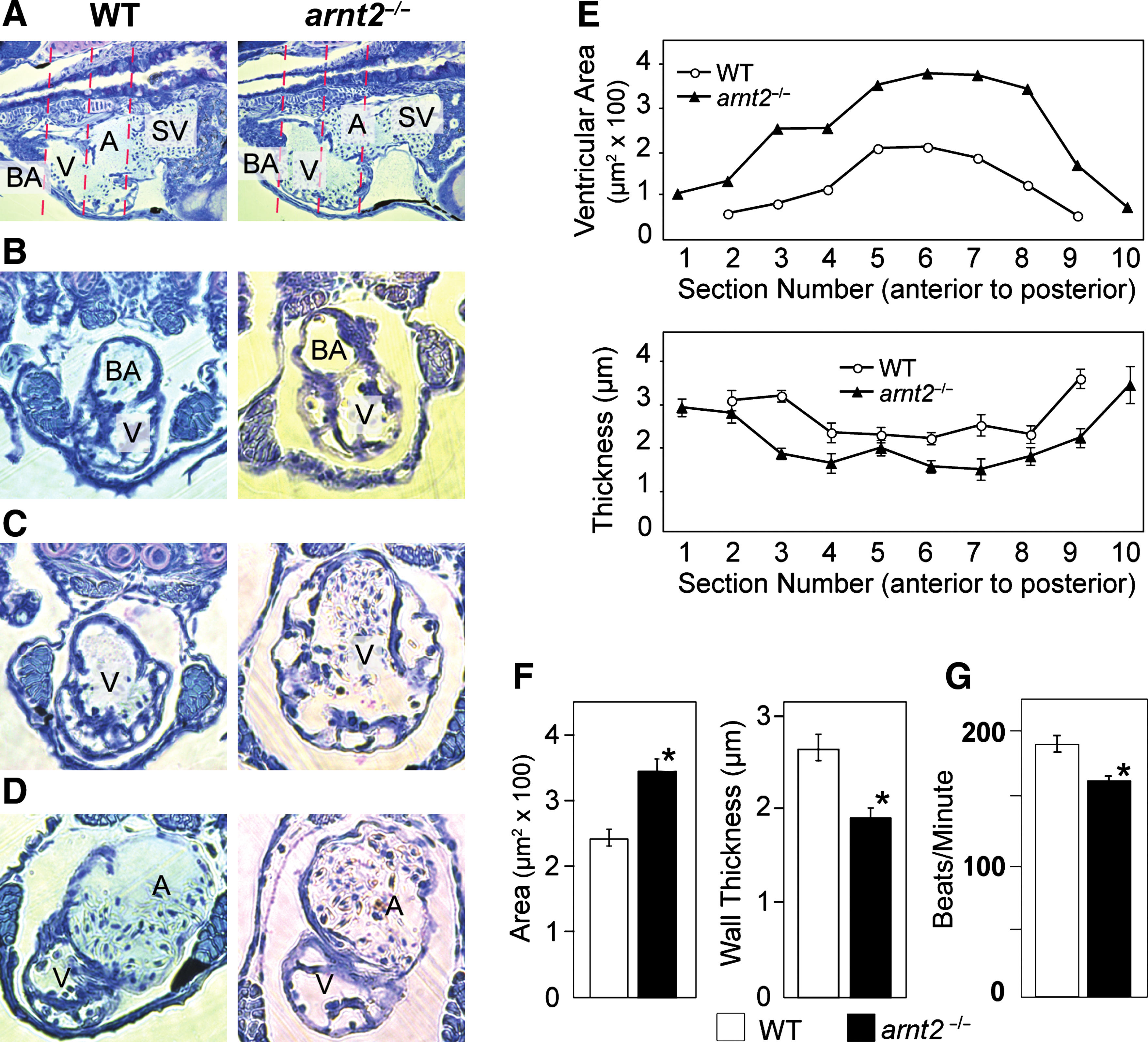Fig. 8 Heart ventricle enlargement, bradycardia, and cardiac arrhythmia in arnt2-/- larvae at 120 and 144?148 hpf. In a representative longitudinal section of the heart (A) of a WT larva (left) and an arnt2-/- larva (right) at 120 hpf, the ventricle of the arnt2-/- mutant appears slightly larger than WT. Transverse sections of the ventricle at 120 hpf were taken along its anterior?posterior axis: anterior (B), middle (C), and posterior (D) for WT (left) and arnt2-/- mutant (right), respectively. A, Atrium; BA, bulbous arteriosus; SV, sinus venosus; V, ventricle. Line graphs (E) show ventricle cross-sectional area as a function of section number (top line graph) and ventricle wall thickness as a function of section number (bottom line graph). WT (line, open circle) and arnt2-/- (line, solid triangle) results shown in the line graphs are for n=7 larvae=genotype at 120 hpf. Mean ventricle area and ventricle wall thickness based on all cross section measurements of the ventricle also are shown for WT and arnt2-/- mutant?s heart (F, bar graphs, right and middle). Heart rate assessed in WT and arnt2-/- larvae at 144 hpf (G) revealed the presence of bradycardia in arnt2-/- larvae (WT, n=4; arnt2-/-, n=11). Asterisk indicates a significant difference (p<0.05).
Image
Figure Caption
Figure Data
Acknowledgments
This image is the copyrighted work of the attributed author or publisher, and
ZFIN has permission only to display this image to its users.
Additional permissions should be obtained from the applicable author or publisher of the image.
Full text @ Zebrafish

